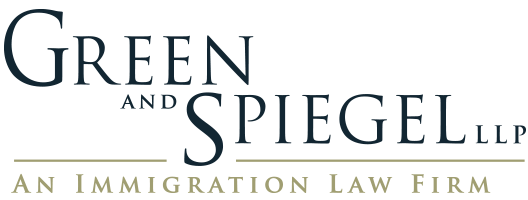It has been a year full of changes for U.S. immigration, and at the conclusion of the U.S. Fiscal Year 2019, we have decided to focus on the current state of U.S. Border Crossings and the U.S. Consular Services and what options are currently available through those two outlets. This year has continued to see an increased reliance on these two outlets: US Customs and Border Protection (CBP) and The Department of State (DOS). We have focused on processing through CBP and DOS to accommodate some of the backlogs currently in place internally within the U.S., specifically through USCIS (United States Citizenship and Immigration Services). As a result, we hope to provide some guidance on where those other outlets can be utilized in order to avoid, when possible, the USCIS Service Centers. The USCIS Service Centers are currently mired in significant delays in many categories, along with a significant increase in scrutiny of all cases that are submitted via the Service Centers.
The Border (U.S. Customs and Border Protection)
L-1 Border Processing:
Considering our positioning in Canada and the high-level of Canadian citizens seeking our help with U.S. immigration, the U.S.-Canadian Border is always an area of focus for Green and Spiegel. The border provides a tremendous resource for Canadian nationals, who are permitted to apply in-person under certain classifications and circumstances.
The biggest development of the year came in April 2019 when U.S. Customs and Border Protection decided that L-1 extensions for Canadians would no longer be processed at the U.S.-Canadian Border and Pre-Flight Inspection points in Canada. L-1 is an intracompany transfer visa permitted for global companies to transfer personnel to the U.S. in either a managerial or “specialized knowledge” capacity. It is an important classification for international companies maintaining operations in the U.S. and Canada. We along with the assistance of the American Immigration Lawyers Association (AILA) Canadian Chapter have implored Customs and Border Protection (CBP) to reconsider the decision. Currently, CBP maintains an inconsistent interpretation that is particular to each Port of Entry. Officially, this is based on guidance from USCIS not to allow Canadian L-1s residing in the U.S. to file extensions at the border, and the nuance comes from each port’s interpretation of “extension.”
Generally, first-time applications at the border for Canadians will be accepted at airports with Pre-Flight Inspection and all physical land borders. That is still intact. In addition, it is consistent policy that any L-1 extension for an individual residing in the U.S. must be processed through a USCIS Service Center. That is where the consistency ends. Currently, each Port of Entry and Pre-Flight Inspection site determines whether they will accept a key category of Canadian L-1s, “Commuters.” If an individual can prove that during their time in L-1 status, they only travelled to the U.S. intermittently, i.e. less than 180 days per year, that individual could be eligible for an in-person extension of L-1 status. This is where there is a divergence on consistent policy. Each Port of Entry or Pre-Flight Inspection site determines individually whether they will accept Commuter applications. Moreover, the required evidence to show Commuter status, less than 180 days per year under L-1 status, is inconsistent, some require more, some less.
The result is that through discussions with individual ports and anecdotal experience shared by AILA and other outlets, we are able to determine where we can send Canadian L-1s. As one can imagine, it is not always an ideal scenario for busy clients with complex business travel. It is an added burden of processing for many senior-level managers and specialized personnel. We continue to stress this aspect with CBP, but the policy remains in place. We will continue to update via our announcements and website.
Online Waivers:
We have had a positive development with waiver applications for Canadians. Traditionally, Canadian nationals who were inadmissible to the U.S. must apply for a waiver through an in-person process directly at the border. An individual must gather the required materials that include: criminal record check, court records if applicable, personal statement, character references, and the associated government forms. The individual then proceeds to the border to conduct an in-person submission at designated Ports of Entry or at some Canadian airports. The applicant is fingerprinted at the in-person submission. Once that is complete the packet is sent to the Admissibility Review Office in Falls Church, Virginia. The processing takes between 3-9 months with the possibility of some cases taking over a year.
In June 2019, the processing of waiver applications was added to the E-SAFE (Electronic Secured Adjudication Forms Environment). The system is still experiencing some delays and some processing problems, but it is a positive development. There is still a wide disparity in processing times, but there have been cases adjudicated within a few weeks. The process now involves submission of the materials online, directly or via a representative. The individual must report for a fingerprinting appointment at designated locations, but outside of that, the process is conducted online. The expectation is that the process will be further streamlined, the kinks will be worked out, and ultimately the process will be improved overall.
Consular Processing
E-2 Alternative:
Due to the inconsistency of L-1 adjudications, both at the border and via USCIS Service Centers, we have been forced to explore other options that can serve our clients’ personnel transfers. The E-2 program is based upon a bilateral trade agreement between the U.S. and Canada that encourages investment in the U.S. from Canadian sources. That is the distinction, which is not applicable in the L-1 category, there is no required nationality to support an L-1. That said, if the company is Canadian-owned with U.S. operations, the E-2 provides an alternative long-term solution through the Consular Services that offers relief during the inconsistent adjudication processes for Canadian L-1s.
The E-2 provides a longer five-year visa, registration of the company that allows for subsequent applications for Canadian nationals who share nationality with the Company, and there is not a requirement of one-year tenure with the company as required by L-1 status.
One key distinction relevant to the situation surrounding L-1 border extensions and alternatives to Service Centers, is that Canadians cannot apply under Blanket L petitions at U.S. Consulates. Blanket L-1 applications are based upon a pre-approval of qualified affiliates for companies that meet certain revenue and personnel thresholds. While all other nationalities are permitted to use the Blanket process through the U.S. Consular Services, there is a specific statutory restriction on Canadians applying under a Blanket through the Consulates. So the E program as an alternative for Canadians is even more enticing.
Immigrant Visa
The other key development that has been a significant burden are the delays with processing of permanent resident applications through the U.S. Consular Services. We have been seeing delays via the National Service Center transfers of cases to the Immigrant Visa Unit at the U.S. consulate in Montreal. Those delays can be between 3-5 months. We hope to start to see those delays clear, but unfortunately there is very little insight available on the process and the cause of the delays. Therefore, we have to continue to monitor.
Expectations for 2020
Overall, we are at an unprecedented point in U.S. immigration law in terms of processing times, and we are dealing with a constantly changing landscape.
As always, we are available for discussions of these issues, if you have any questions, please contact us directly.




